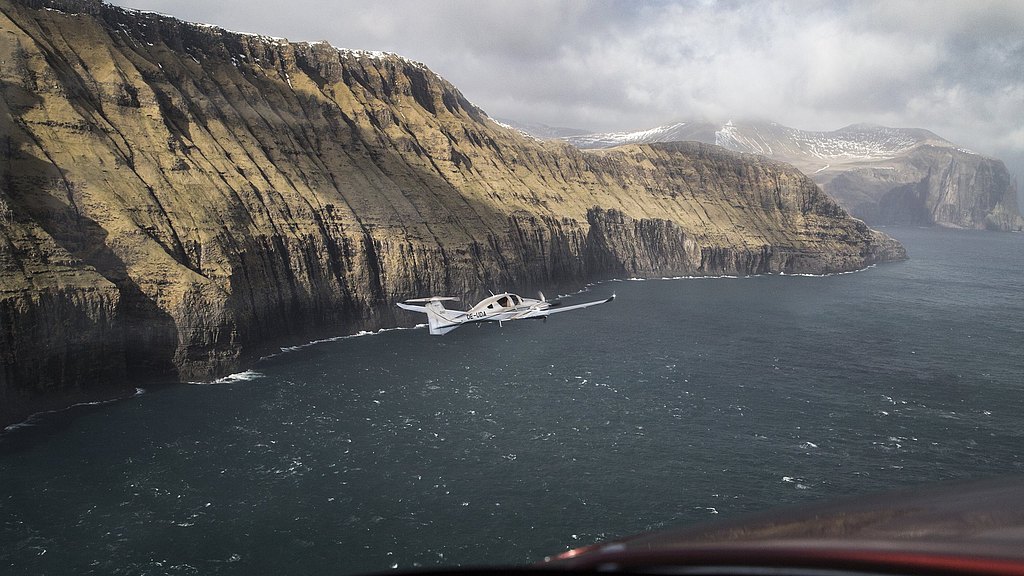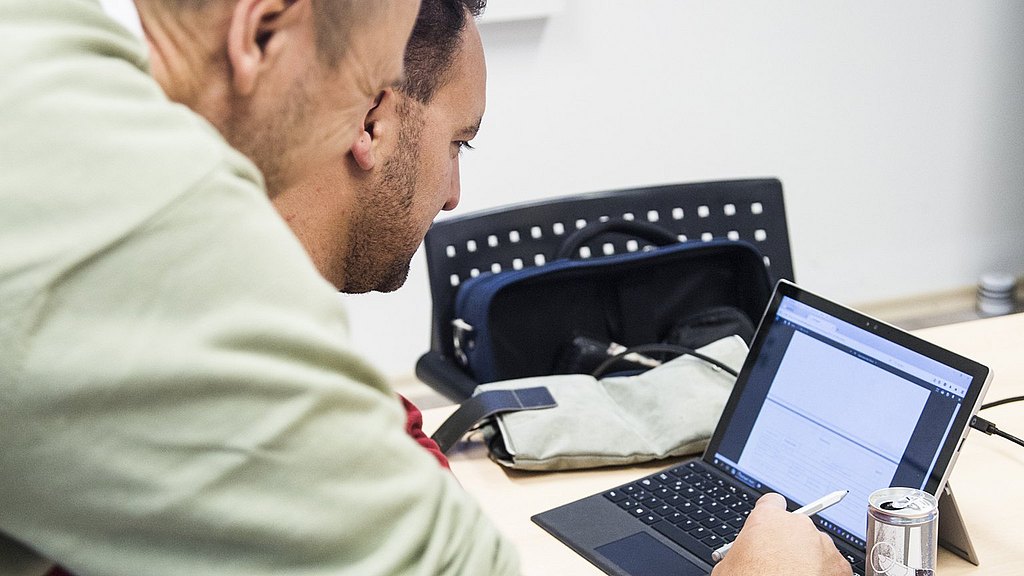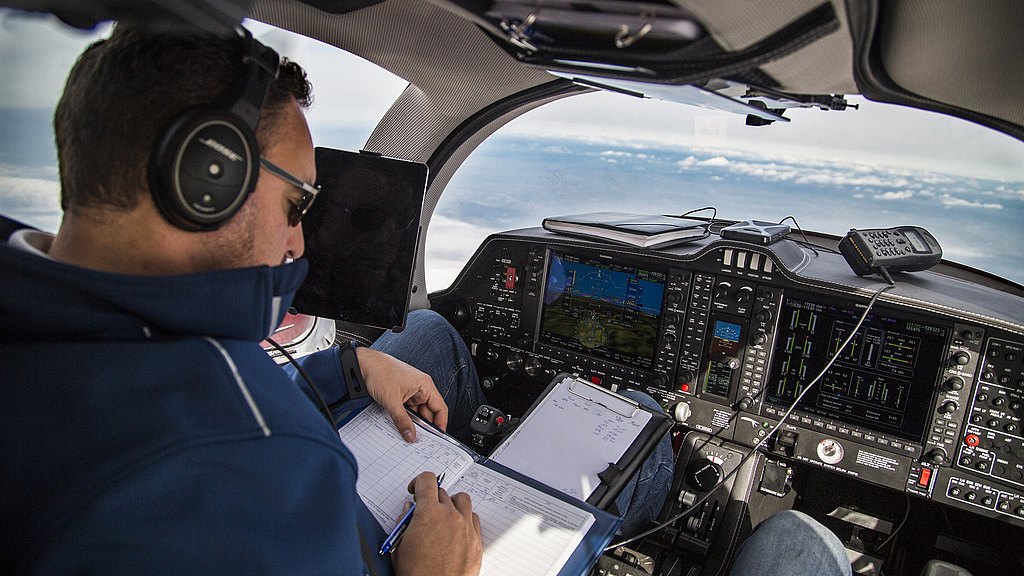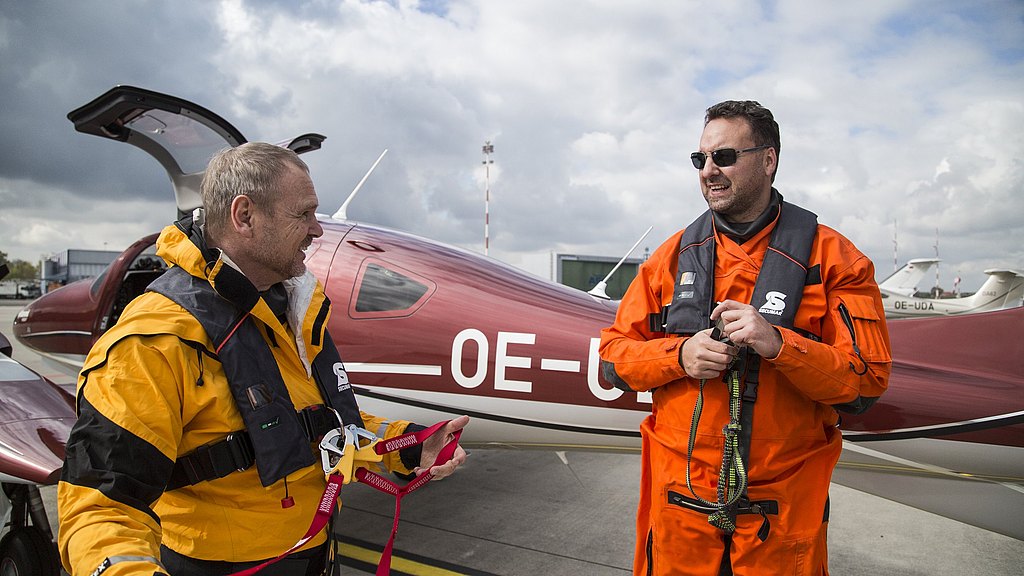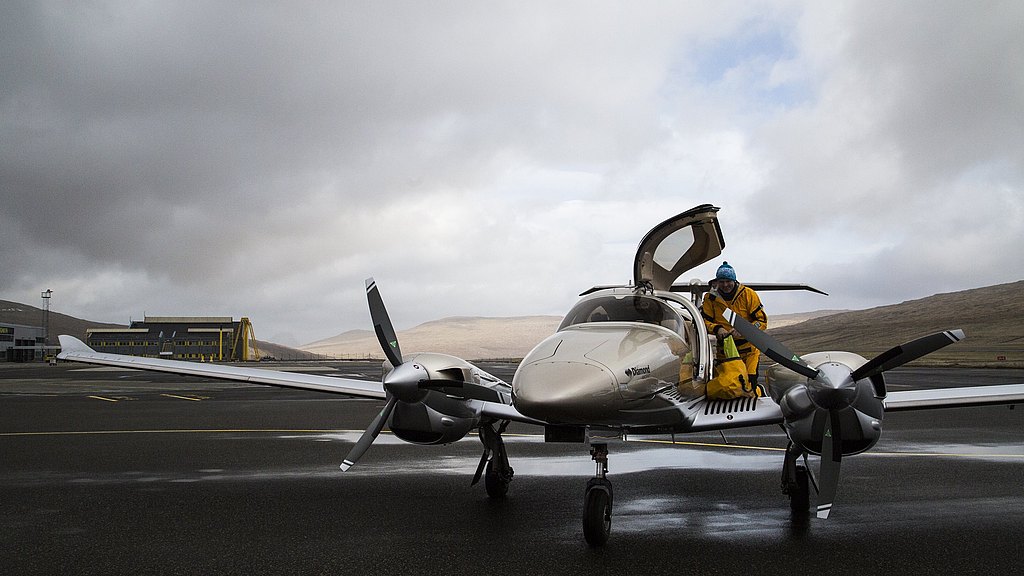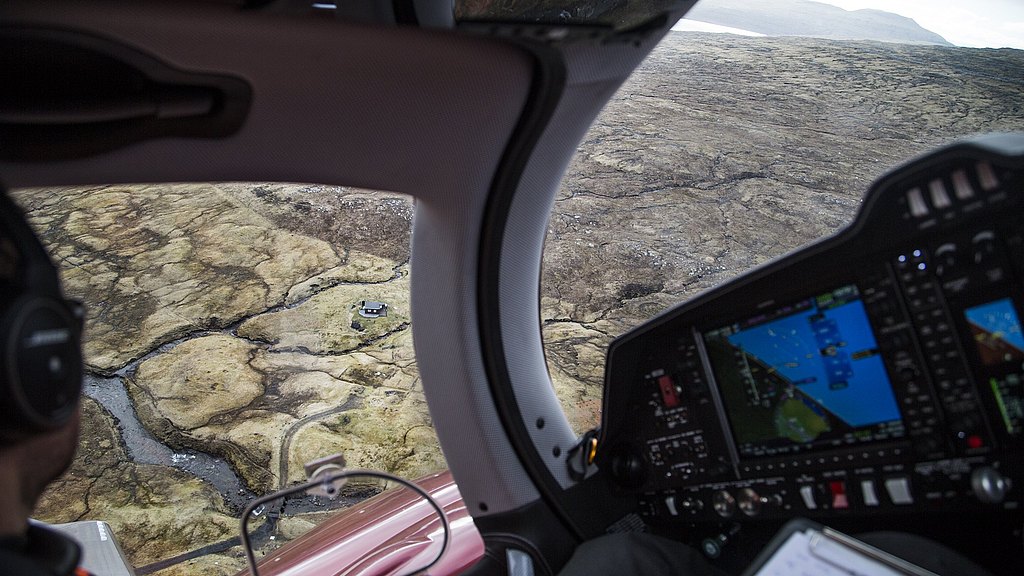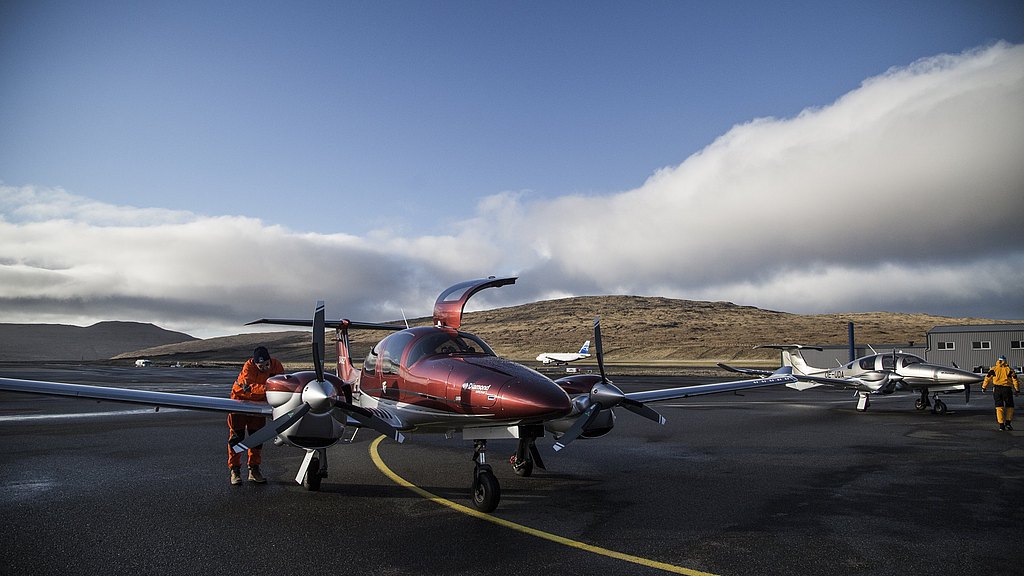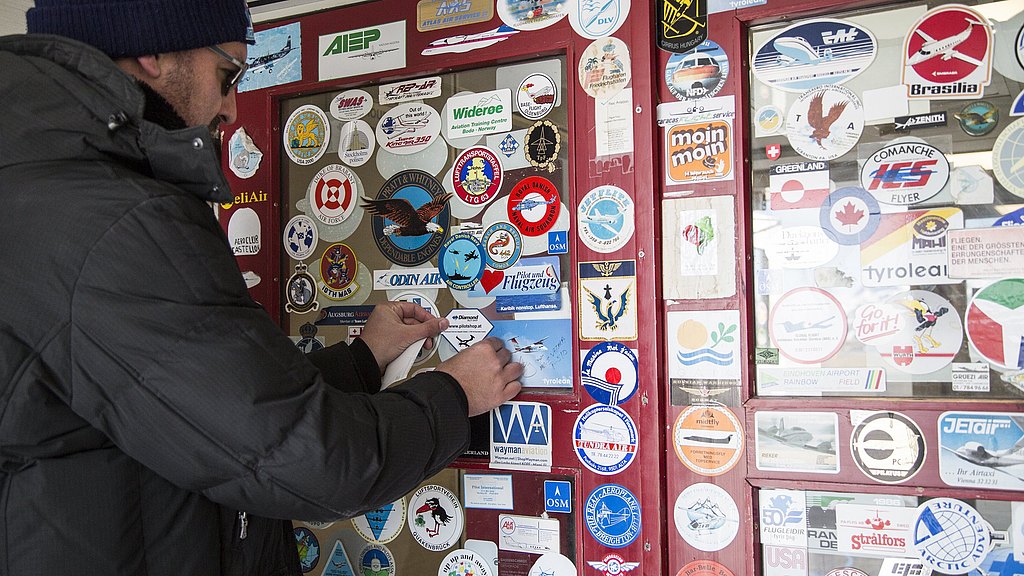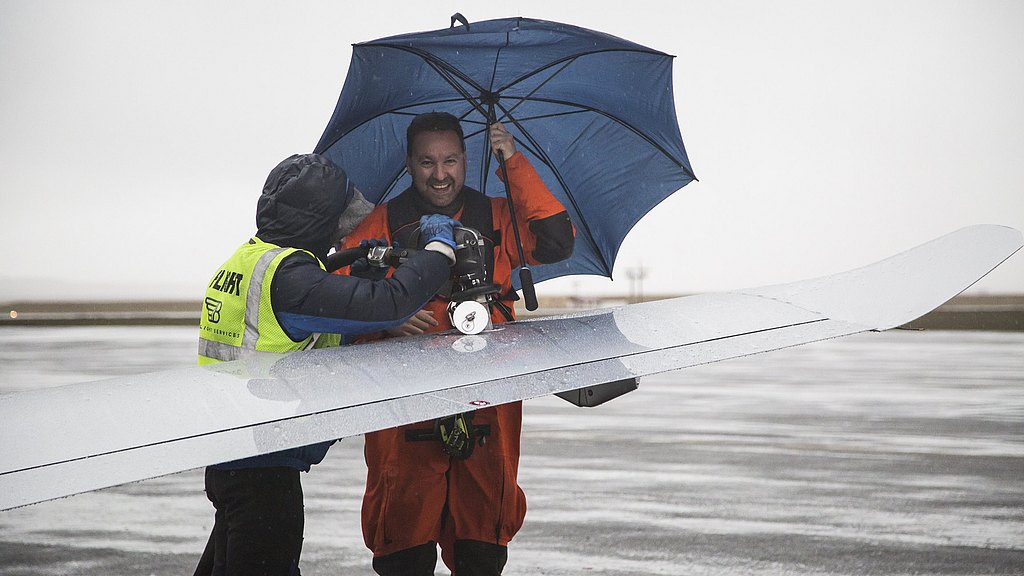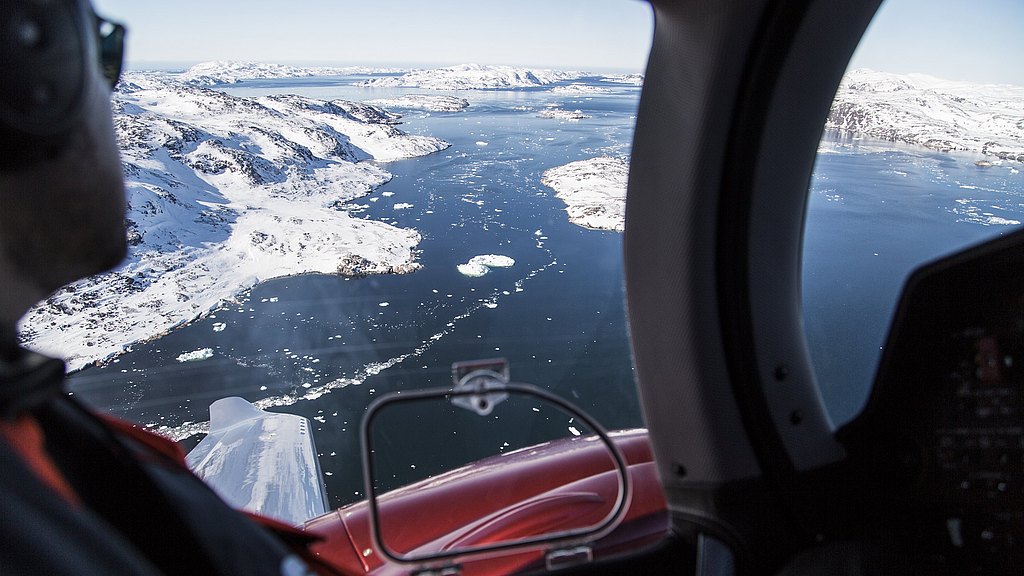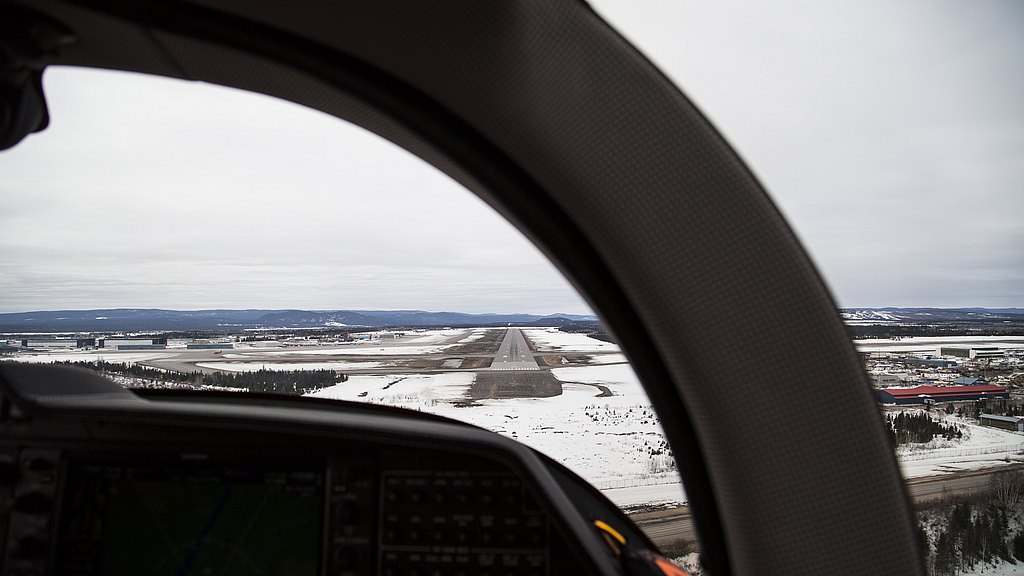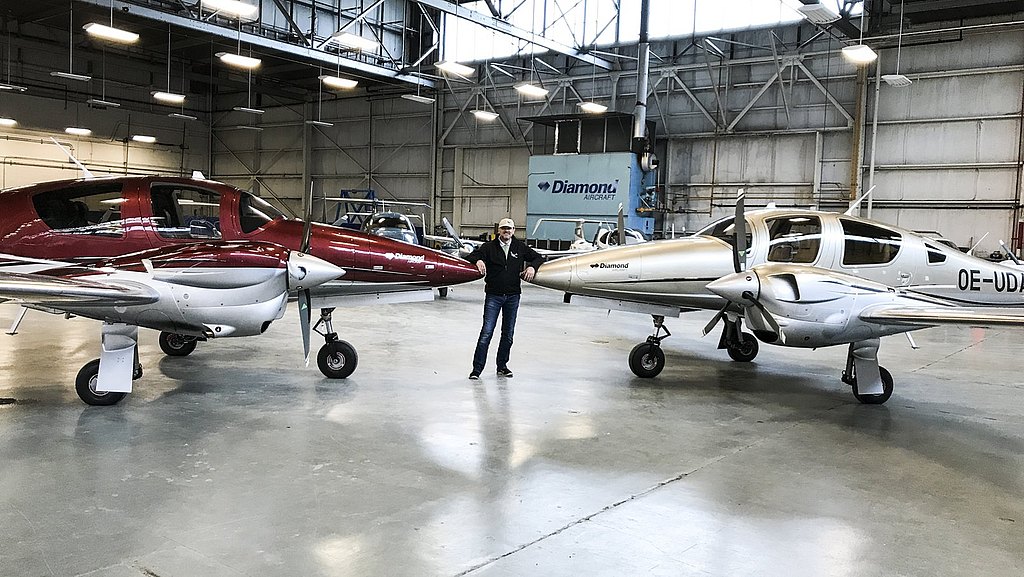No aircraft can simply be dismantled and shipped from one place to another – not even a twin-engine aircraft. Its hull hardly fits into a container. Besides, extra costs and time spent to reassemble it and get all the required technical certifications do not make economic sense. That is why the DA-62 and DA-42 are flown from Wiener Neustadt to their final destination. A flight that is planned, prepared and executed by a small team of pilots with an adventurous spirit flowing through their veins. But make no mistake, ferry flights are a demanding business.
I am lucky to accompany such a ferry flight, from Wiener Neustadt, Austria, to London, Ontario, in Canada – a route over well-developed countries with familiar bureaucracies and values. I recall a ferry flight to Australia, a somewhat adventurous journey which Diamond pilots will have to tackle a few times this year. Our flight, tough, takes us over the North Atlantic. My mind immediately conjures up images of icebergs, frontal systems, iced-up wings, and merciless headwinds. Still, I have faith in Martin Scherrer, my Pilot in Command. He has mastered many such flights and considers his survival suit and the life raft just another set of practical tools. Fortunately, he has never had to use them.
But, let’s take one thing at a time. Our tried and tested flight path takes us via Germany and Scotland to the Faroe Islands or directly to Iceland – depending on the crew’s staying power. Then, there is a long stretch over water and ice. Greenland is the last stop before we will reach US mainland. From there, we will head towards our destination airport London, Ontario, a mere 2-hour drive from Toronto.
Planning is everything
Weeks ahead, Diamond pilots keep track of the weather. If the forecast shows the jet stream in a dark violet colour, the endurance turns into a maths challenge, even for us, and despite a range of almost 2.400km. Several thousands of kilometres over open water with no alternative airports close by must be covered. There is lots to do: landing rights and overflight permits must be checked, fuel and customs organised, the life raft made ready for us, and much more. All this seems to happen behind the scenes as the team of Diamond pilots is well connected and well versed with every detail. Once the brand-new, custom-designed DA-62 has passed every technical inspection, they ensure that we are cleared for take-off as scheduled.
One morning, its two Austro Engines push us into our seats at 6 am sharp. The fully fuelled and loaded plane takes off swiftly, and Wiener Neustadt becomes smaller and smaller. Despite strong headwinds, we are well on track. At FL180, the icy front over Southern Germany is well below us and we can save deicing fluid. Time really flies in every sense of the word on the flight to Muenster – or maybe I’m just giddy with anticipation as the first stretch over open water draws near. While our aircraft quenches its thirst for Jet A1 fuel, we put on our survival suits over our clothing. It’s like wearing a protective layer, covered only by our shoes. The suits are fully waterproof. They will give us the time we need to inflate our life raft and get into it in case of an emergency landing on water. In icy cold waters, the survival suit won’t save us from freezing to death, it will merely give us more time. In any event, it’s an image boost. Wearing my survival suit, I feel like on a mission to the moon – or at least to the North Pole. To ensure that I don’t get stuck in the cockpit like a balloon, I equalise its pressure by loosening the neck seal just before we reach our cruising altitude at FL120. Below us, the Netherlands disappear, and I see the North Sea as we head towards Scotland with a ground speed of 150kts.
Finding a needle in a haystack
I am surprised how quickly time flies. The autopilot calmly and reliably follows flight directions like Swiss clockwork and the G1000 reduces cross-checks to a mere glance. Nonetheless, there is constant activity. We note the position and direction of any ships we see – this could save our lives if the worst comes to the worst. For the first time, I am consciously aware of the vast the expanse of water beneath us. Spotting a ship is like finding a needle in a haystack. Ahead of us, typical Scottish weather promises us a chilly greeting. Still, it’s a fascinating flight amidst clouds, rain and flurries of snow. Our VFR detour to Loch Ness is less exciting, unlike the magnificent coastal cliffs en route to Wick, our stop-over in Northern Scotland. The sun adds sparkles to the colourful Scottish heather that grows in abundance on the greyish rocky landscape. As we sneak through the control zone on our VFR flight to Wick, Seagulls soar in the coastal winds.
We escape the wet spring weather and run towards General Aviation. Inside, we are greeted with dry British humour. We get fuel and, most importantly, our life raft. The cup of hot coffee from the vending machine doesn’t keep us for long. After the weather check, we are quickly cleared for our next destination, the Faroe Islands. Although the range of our twin-engine aircraft would easily take us to Iceland, a detour to this rugged group of islands promises to be worth our while. It will be our first overnight stay. Our inner clock is still attuned to our time zone. After all, we were only travelling up north so far. We pass the mark of the 61st degree of latitude and continue to Vagar. Our radio communication now becomes quieter and we remain on standby. Pumping fuel from the additional tank requires some attention. All in all, it’s a smooth flight as we continue even further up north. The Garmin display has turned blue and I glance behind us to the last row of seats where our life raft has been stored close at hand. In front, the additional GPS Spot marks our position every two minutes – a life tracking device for more safety. The adventure that I have embarked upon has suddenly sneaked up on me. For Martin, it’s just business as usual. As I watch the low afternoon sun, the two Austro Engines hum along smoothly. Suddenly, a rugged coastline with impressive vertical cliffs emerges from the clouds. As we descend to the Faroe Islands, its waterfalls and coarse blackish-brown mountain slopes greet us. Leeside of the cliffs, turbulences shake our plane from side to side. Nonetheless, we deviate from the famous “waterfall approach” towards Rwy 30 – a most breath-taking approach along Lake Leitisvatn – to catch sight of its namesake from our front row seats: the Bosdalafossur waterfall which plunges 30m down into the Atlantic at the end of the lake. While we are ecstatic about this natural wonder, we are just as relieved to finally leave the nasty turbulences behind us and get a clear visual approach to the airport in-between two rain showers. I am truly glad to be back on solid ground.
Welcome to Middle-earth
This is how I imagined Middle-earth: short brown grass and vegetation that fights for every centimetre. Wind blowing from every direction and low glistening sunlight in the crystal-clear air. Small and large waterfalls are arranged in steps next to each other, and every now and then rain briefly showers the slopes. The Faroe Islands enthral us with untamed charm, just like the road to Torshaven, the capital city. Its black and seemingly endless twists and turns guide us through this ruggedly beautiful landscape that appears to be inhabited only by birds and sheep. This is what also features prominently on restaurant menus in the capital. We are famished after a long day’s flight and quickly forget all prejudices about eating sheep. After a heavy meal, we drop just as heavily into bed.
The sorrow felt by ferry flight pilots or its crew is a conjunctive mood because one sees regions and countries that would be great to explore, if only the customer would not be waiting longingly for the aircraft. Time therefore urges us on. The next morning, we quickly leave the Faroe Islands and its morning mist behind us. As we break through the clouds, the sky is clear and sunny. Clearly, this is what we all prefer. Besides, the sun warms us up and prevents our wings from icing up. I am reminded of Alcock and Brown who had to climb out of the cockpit several times to manually de-ice their plane. We just need to press a button to keep the cockpit windshield, propellers and wings ice-free. Three hours later, this luxury comes in handy as we reach Iceland. Bad weather and dark clouds greet us. Luckily, the weather is fine beneath cloud cover and our low-altitude flight along the coast is a piece of cake. Iceland’s black-sand lava beaches are framed by sharp vertical cliffs with sheer drops into the ocean. The world-famous volcano Eyjafjallajokull, however, remains hidden behind thick clouds. We can hardly believe our eyes when we pass a waterfall that is virtually blown upwards by strong winds. Our plane, though, is unperturbed by these harsh conditions and groundspeed remains stable. Shortly thereafter, this all changes into an icy IFR approach to Reykjavik. Thankfully, our captain is an old hand. Strong side winds turn sleet and snow into a brief blizzard and require his full concentration. A few lose items fly about the cockpit during what would otherwise be a panoramic approach over the city centre. After landing, we escape the next shower of sleet and snow and run towards the office. For the friendly Icelanders – they provide us with weather updates and fuel – it’s just another spring day. As there is not much sightseeing to be done, we check the weather, log in the flight plan and continue our trip without much of a break. At FL100 we are finally clear of the turbulent layer of clouds. Despite deicing fluid, the windshield only defrosts slowly. I suddenly realise that this will be the first long stretch over water. Alternative landing strips are now rare and soon the Garmin display switches from Enroute to Oceanic. There is no airport within a range of 200NM or more. Whenever the cloud cover opens up, I search for ships – to no avail. Once again, crosschecks are carried out more frequently and diligently. Radio communication with ATC takes place via relay stations. I soon grow accustomed to this strange feeling and even recline my seat to dose off a bit.
Loosing all sense of size and dimension
Martin suddenly rouses me from slumber and points towards the first snow-white peaks emerging on the horizon: Greenland – sooner than expected thanks to less severe headwinds. This time, the weather is on our side. We see first ice fields below us and descend as far as possible. Along the coast, we pass fjords made from ice and rocks. The cold makes the water appear as thick as oil. Nature offers us a colour spectrum comprised of nothing more than blue, white and black. As we seem to lose all sense of size and dimension, the icebergs below us appear as large as our plane. Or are they even bigger? We fly past icefalls which flow directly into the sea and wild cliffs which seem to grow out of the ice fields. Today’s destination Narsarsuaq is located on the west coast of Greenland, yet we cross the mainland farther south. Since departing from Iceland, we have flown in a southern but mostly western direction. Several time zones pass by below us. Early afternoon local time we reach Narsarsuaq. I glance towards the moving map and become aware of the sheer size of Greenland. The world’s largest island stretches 2.600km up to the north. Narsarsuaq greets us with sunshine. The Inuit ground handling crew, who normally refuel Air Greenland’s Dash 8, is very friendly. We take some time and decide to hike up the hill that is situated next to the town. It’s a challenging ascent as we wade through knee-deep snow but worth our while. The panorama view over the town that is just 9km from Greenland’s ice sheet and which is home to 150 permanent residents is breath-taking. The airport is serviced by international flights even though there is no guarantee of radar coverage and air traffic control. It’s a matter of approach at own risk. Ferry flights, however, have a long tradition at Narsarsuaq. The airfield was built during World War II to serve as a refuelling stop for the P38 and B24 on their flights to Europe.
It’s low flying the next morning as we leave the Fjord and aim towards the open sea. Icebergs and ships accompany us – most local towns are accessible only by water. Smaller islands and even icebergs eventually disappear as we reach open water once again. We have embarked on our final and longest flight over the Atlantic. The tall and friendly Inuit in the tower forecast strong headwinds when he gave us the weather briefing. Indeed, we now feel the 40kn that hit the nose of our aircraft. During our climb, the circle that indicates the endurance range only shows the coast of Canada. At cruising level, though, and to my relief, our range extends far into the Canadian Tundra. Fuel is pumped from one tank to the other, temperature and oil pressure are normal. We report our position at regular intervals. Without radar coverage, we have to estimate our arrival time at the next checkpoint and advise the controller accordingly. The Garmin replaces the slide rule. Lost in thought and the routine of the ferry flight, we catch sight of first thin strips of drift ice after a few hours. The organised strips then become denser and we make out individual ice floes which gradually turn into larger fields of ice until the white ice covers the entire horizon. The Labrador Sea has turned into the Arctic Ocean which finally subtly merges with the mainland. It takes me a while to realise that we have taken a giant step from one continent to another. We’ve crossed the Atlantic. I’m ecstatic, and Martin just smiles, once again …
We finally reach US mainland in Goose Bay. Only the airport’s classy Flight Office seems to pay tribute to our long journey – golden stripes on the shirt would be the order of the day. Other than that, Happy Valley Goose Bay appears rather less happy. After a quick stop for refuelling, we take off on a low VFR flight in a south-westerly direction. For the next few hours, it’s an ever-changing panorama of lakes and forests. We climb to a more favourable altitude yet must compensate speed and height for more headwind. At precisely 51.5 degrees latitude, we reach the French-speaking part of Canada where borders were drawn with a ruler. The accent of the controllers has changed unmistakably. Below, it’s just the thickness of the snow cover that slightly changes until we reach the Saint Lawrence River. It’s almost as huge as the sea, and we follow it upstream to our next destination – Quebec.
Back in civilization
From one moment to the next we’re back in civilization. An F18 is parked on the apron next to us, and there is even a separate Arrivals for General Aviation. Earlier this morning, we woke up amidst Greenland’s wilderness. Now, we are enjoying huge burgers, brought to us by a very friendly waitress in a typical Sports Bar. I seem to have lost my sense of time somewhere between Iceland and Narsarsuaq.
The Canadian Wildlife Ministry’s water bombers are lined up for us when we taxy to the runway the next morning. Jetlag woke us early to remind us of the last 900km to London. A detour to the Niagara Falls is a must. A simple adjustment to our IFR flight plan is all that is required. We circle a couple of time over the falls – all legal and within IFR – and watch tourist helicopters doing the same below us. The land of opportunity and its borders, which we do not cross, is right next to us. The last few kilometres to London fly by too fast, leaving us almost no time to digest the impressions of our adventure. It’s a smooth touchdown on the runway in London. Nevertheless, I feel as though I have accomplished a great mission. We roll down the taxiway that is lined by forest trees to the Diamond Hall. Despite this being a weekend, we are received with a warm welcome. While part of the Diamond crew takes over the aircraft, other crew members serve us great-tasting hot coffee. Over the next few days, they will put the DA-62 through its paces and polish it to a mirror finish before its new owner can finally take off.
A private tour through the Diamond Canada production facilities adds a finishing touch to our journey. I am told that DeHaviland Mosquito combat aircraft were manufactured here during the Second World War – planes that competed against the Me109 which were produced in Wiener Neustadt at the same time. Aren’t we lucky that today we work in tandem at both locations and no longer fight against each other?
